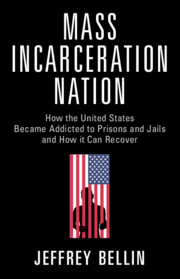 Mass Incarceration Nation
Mass Incarceration Nation Book contents
- Mass Incarceration Nation
- Mass Incarceration Nation
- Copyright page
- Contents
- Figures
- Tables
- Acknowledgments
- Introduction
- Part I What Is Mass Incarceration?
- Part II The Building Blocks of Mass Incarceration
- Part III The Mechanics of Mass Incarceration
- 10 More Police, Different Arrests
- 11 Prosecutors Turning Arrests into Convictions
- 12 Judges Turning Convictions into Incarceration
- 13 Judicial Interpretation
- 14 Punishing Repeat Offenses
- 15 The Parole-and-Probation-to-Prison Pipeline
- 16 Disappearing Pardons
- 17 The Mindlessness of Jail
- Part IV The Road to Recovery
- Conclusion
- Notes
- Index
13 - Judicial Interpretation
from Part III - The Mechanics of Mass Incarceration
Published online by Cambridge University Press: 03 November 2022
- Mass Incarceration Nation
- Mass Incarceration Nation
- Copyright page
- Contents
- Figures
- Tables
- Acknowledgments
- Introduction
- Part I What Is Mass Incarceration?
- Part II The Building Blocks of Mass Incarceration
- Part III The Mechanics of Mass Incarceration
- 10 More Police, Different Arrests
- 11 Prosecutors Turning Arrests into Convictions
- 12 Judges Turning Convictions into Incarceration
- 13 Judicial Interpretation
- 14 Punishing Repeat Offenses
- 15 The Parole-and-Probation-to-Prison Pipeline
- 16 Disappearing Pardons
- 17 The Mindlessness of Jail
- Part IV The Road to Recovery
- Conclusion
- Notes
- Index
Summary
Judges play a role in enabling Mass Incarceration beyond imposing longer sentences. Judges also set the boundaries of American criminal law. They do this in two ways: (1) judges interpret the criminal laws that legislators enact and (2) judges ensure that the processes the government uses to lock people up comport with state and federal constitutions.
- Type
- Chapter
- Information
- Mass Incarceration NationHow the United States Became Addicted to Prisons and Jails and How It Can Recover, pp. 130 - 140Publisher: Cambridge University PressPrint publication year: 2022
